Viewing: Blog Posts from the Illustrator category, Most Recent at Top [Help]
Results 26,701 - 26,725 of 156,698
Blog: Jennifer E. Morris (Login to Add to MyJacketFlap)
JacketFlap tags: Add a tag
Blog: Picture Book Illustration by Kim Sponaugle (Login to Add to MyJacketFlap)
JacketFlap tags: Add a tag
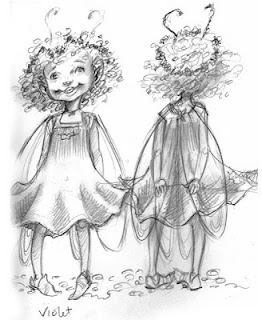 |
| Violet Wings - fairy friend |
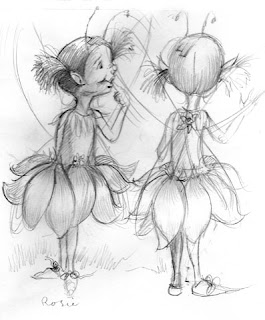 |
| Rose Wings - fairy friend |
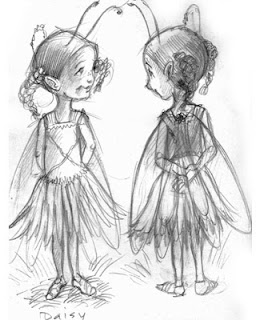 |
| Dairy Wings - fairy friend |
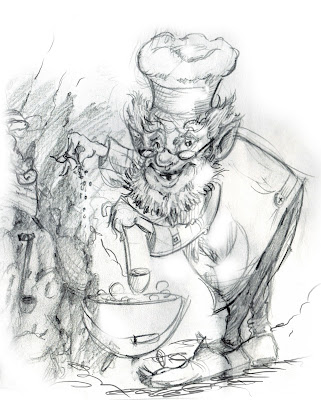 |
| Onslo T. Quagmire- Chef extraodinair in Ogreois Cusine |
 |
| Having Elderberry Tea at the Laughing Tree |
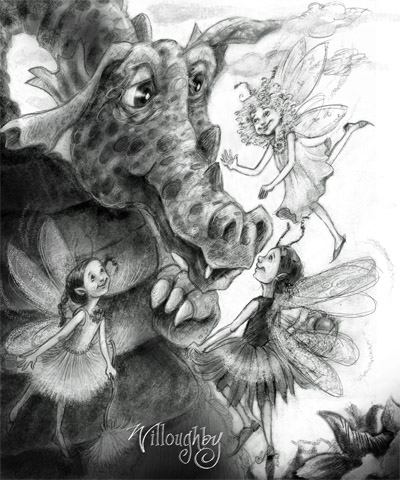 |
| Willoughby meets the fairy fae |
Blog: Brooke B. (Login to Add to MyJacketFlap)
JacketFlap tags: Add a tag
A couple of weeks ago author/illustrator, Joyce Wan, tagged me to join in "The Next Big Thing", a blog tour about children's books that started in Australia and has spread around the world. (You can see Joyce's post here). Thanks, Joyce!!
I'll be answering questions about my two up-coming books. Here goes!!...
1. What is the working title of your next book?
Cupcakes Cousins by Kate Hannigan and Baby Love by Angela DiTerlizzi.
2. Where did the idea come from for the book?
The ideas came from Kate and Angela, authors extraordinaire!
3. What genre does your book fall under?
Cupcake Cousins is an illustrated middle grade book. Baby Love is a picture book.
4. What actors would you choose to play the part of your characters in a movie rendition?
The two main characters in Cupcake Cousins are Willow and Delia. For Willow I think I'd choose a 10 year old Megan Follows, from Anne of Green Gables fame. For Delia I think Amandla Stenberg, who played Rue in The Hunger Games, would be a good fit.
For Baby Love I'd choose my cousin, Laura and her very cute baby, Harper!
5. Who is publishing your book?
Cupcake Cousins is being published by Disney/Hyperion and Baby Love will be published by Beach Lane Books (an imprint of Simon and Schuster).
6. How long did it take you to illustrate the book?
Well, I'm still working on both books, but it looks like each book will take about nine or ten months.
7. What other books would you compare this story to within your genre?
Hm... I can't think of a book that I've read that reminds me of Cupcake Cousins. Maybe Kate can field that one (you can see a link to her blog below).
Baby Love reminds me a little of Ten Little Fingers and Ten Little Toes, by Mem Fox.
8. Who or what inspired you in illustrating this book?
For Cupcake Cousins I was very inspired by Kate's writing. Her descriptions really brought the characters to life and I've loved exploring the world that Kate has created. The two main characters love to bake and so do I, so that helped, too.
For Baby Love, Angela's text is really lovely and simple and left a lot of room for me to explore. I asked both Angela and my cousin, Laura, to send me pictures of their babies, which has been really helpful since I don't have a baby of my own. One of the most inspiring things has been to hang out with my friend Bethany and her darling baby and to see how they interact together.
9. What else about the book might pique the reader's interest?
Cupcake Cousins is such a warm, heart-felt, summertime story. And there are recipes!!
Baby Love will make a wonderful gift for new parents (or anyone who likes babies!) and is a very sweet story. It will be perfect to read to little ones at bedtime or anytime they need a little extra love.
And now it's my turn to do the tagging...
The fabulous Kate Hannigan will be talking about Cupcake Cousins. Hooray, Kate!
And my friend, critique partner, and amazing author/illustrator, Tina Kugler, will be talking about her new picture book, In Mary's Garden, which she is creating with her husband, Carson Kugler.
Thank you again to Joyce Wan for inviting me to be a part of "The Next Big Thing". Please be sure to visit Joyce's blog.
Thanks for reading and happy Tuesday!
Blog: castle-building (Login to Add to MyJacketFlap)
JacketFlap tags: Add a tag
Blog: Cartoon Brew (Login to Add to MyJacketFlap)
JacketFlap tags: School of Visual Arts, Zach Bellissimo, Blenderstein, Ideas/Commentary, Schools, SVA, Add a tag

Last week, I flew out from Los Angeles to New York to attend the annual Dusty animation screening at the School of Visual Arts. I watched forty thesis films from this year’s graduating class—a very solid year, I might add—and witnessed many of the students experience pre-show jitters and post-show relief. It was a fun night getting to see a lot of my old classmates, friends and teachers again, but most importantly it made me reflect on my own experiences since my own thesis screening two years ago.
While graduation was a big deal, the thesis screening was really the big night for us. The films we put a year’s worth of blood, sweat and tears into were going to be shown in front of an audience on the big screen, and for most of us, that was a completely new experience. Some of us felt that our thesis films were like big flashy business cards or “HIRE ME” signs, so if there were any industry people in the audience that night, it just might be the ticket to having a job lined up after graduation.
A few days later at the Dusty Awards ceremony, my film ended up winning the Outstanding Traditional Animation award (tied with my friend Zach Bellissimo’s Blenderstein, which was featured here on Cartoon Brew), so in a way I felt validated that I was a decent enough animator to go out and make a living after I left school.
But after college, the excitement of working as a professional animator gradually began to fade. I went through many ups and downs (mostly downs). I had long periods of busy work, and even longer periods of unemployment. And some of the jobs I had, while keeping me busy, barely supported me. There were times that I felt my future was uncertain, and that having a career in this field might not work out for me. I became disenchanted with the medium, felt emasculated by my peers and started falling into a depression. And seeing a lot of my friends and classmates in equally dire straights filled me with even more trepidation about my career path.
After dealing with this for over a year, I finally made a very big decision to pull up stakes, leave New York and move to LA. It was risky because I didn’t have a job lined up for me when I came out here. Luckily I had friends who found a place for me to live and I got a job in the industry almost immediately upon arrival. Even though I’ve been in LA for only three months, I consider it the best decision I’ve ever made. I feel like I’m in an environment where creativity and appreciation for the craft is never-ending, and I’m the happiest I’ve been since I graduated two years ago.
And being back at the SVA Theatre watching these incredibly talented young animators go through the same reactions and emotions filled me with both excitement and concern. These students, as well as the hundreds upon hundreds of other graduates coming out of animation schools all over the country, will be put through the same paces as myself. After graduation, that safety net of college life is gone, and despite what your professors or friends tell you, nothing can really prepare you for what happens after you graduate. But the important thing that I want to express to these soon-to-be professional animators is to be hopeful, hone your craft, push yourself out there, and eventually you will find your place.
Don’t let ANYONE or ANYTHING disenchant you. Everybody goes through these motions at one time or another after leaving school. Some of you might have jobs lined up right after school, and some of you might have to wait a little longer. It’s a very scary thing to go through, but it’s all part of the experience. You appreciate things more when you experience the bad alongside the good. It’s something you learn from, and carry with you for the rest of your life. Never wait for opportunities to come along, but instead seek them out. It’s different for everyone. I had to move from one coast to the other to find what I wanted, and I’m glad I did. Keep doing personal work, develop your skills up and surround yourself with people who love and support you and what you do. If you do that, everything will be okay.
With that, I want to congratulate and wish the best of luck to all the recent and soon-to-be graduating animation students. Don’t let employment statistics fool you. The world is chock full of opportunities waiting for you to snatch up. So go out there and keep this industry alive and thriving!
Add a CommentBlog: The Rhinoceros Boy's Lament (Login to Add to MyJacketFlap)
JacketFlap tags: Add a tag
Blog: Paul Schmid studio (Login to Add to MyJacketFlap)
JacketFlap tags: fauxtionary, Add a tag
Blog: Cartoon Brew (Login to Add to MyJacketFlap)
JacketFlap tags: Pirates of the Caribbean, Epic, Horton Hears a Who, Rio, Men In Black, Artist of the Day, Sang Jun Lee, star wars, Add a tag
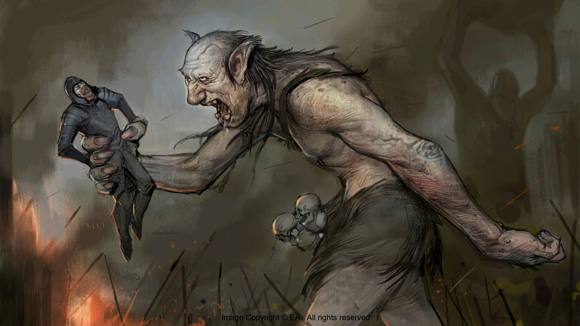
Continuing our week of looking at artists who worked on Epic, we focus on Sang Jun Lee.
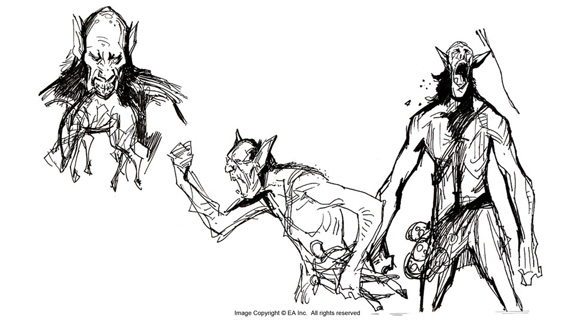

Sang Jun has designed characters and concepts for many blockbuster movie franchises including Star Wars, Pirates of the Caribbean and Men In Black. After a stretch of working in California on these live-action films, he moved to New York to work on Blue Sky features such as Horton Hears a Who, Rio, and most recently, Epic.

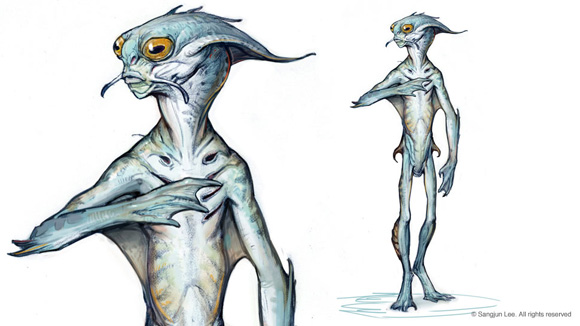
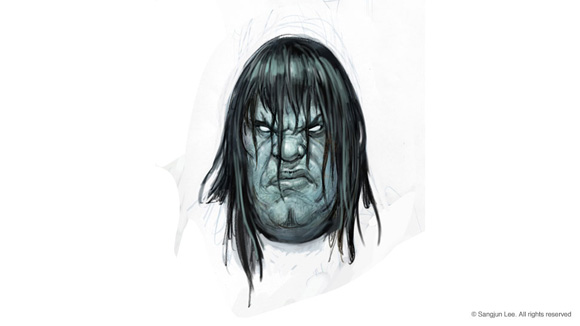
Sang Jun’s website has a generous amount of drawings and digital paintings to explore. He also keeps a blog here.
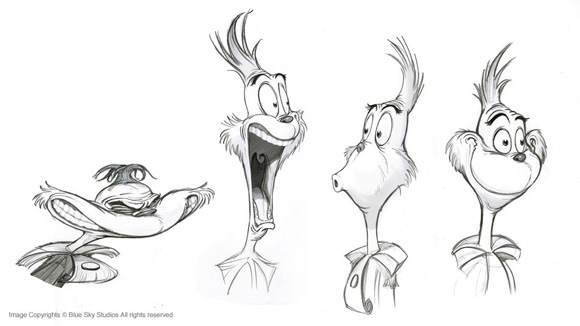
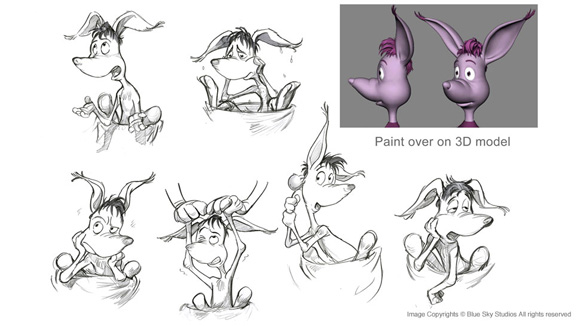
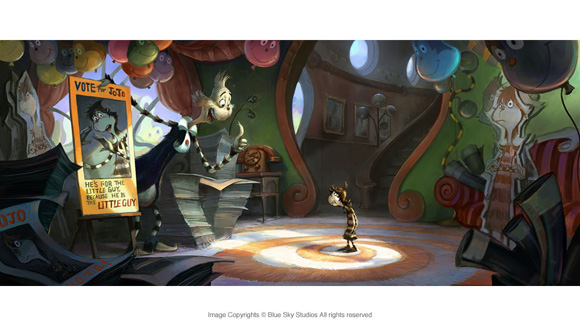
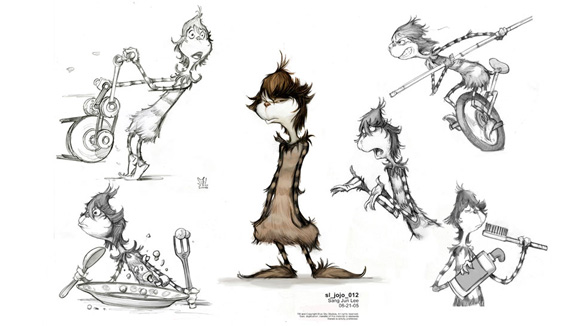
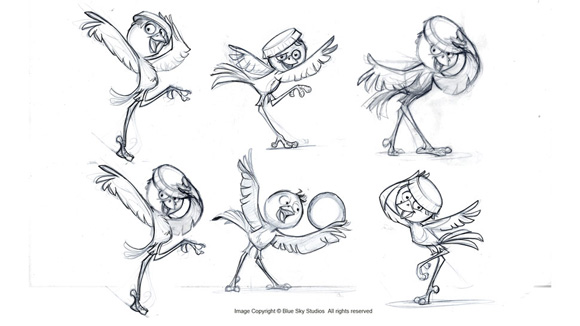
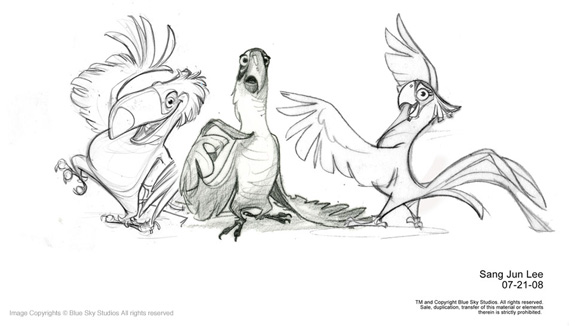
Blog: Picture Book Junkies (Login to Add to MyJacketFlap)
JacketFlap tags: Add a tag
Blog: Mo Willems Doodles (Login to Add to MyJacketFlap)
JacketFlap tags: Books, Add a tag
Gerald is careful. Piggie is not.Piggie cannot help smiling. Gerald can.Gerald worries so that Piggie does not have to.Gerald and Piggie are best friends.In A Big Guy Took My Ball! Piggie is devastated when a big guy takes her ball! Gerald is big, too...but is he big enough to help his best friend? Available your favorite local book store or library today! I hope you enjoy the BIG surprise!
Blog: Cait's Write... (Login to Add to MyJacketFlap)
JacketFlap tags: running, motivation, Add a tag
Running is a crazy, paradoxical, numerical-obsessedo, backwards world.
Just when you don’t think you can run another step, you push through five more minutes, then instantly you feel like your legs have transformed into two totally different running entities. You go on for miles.
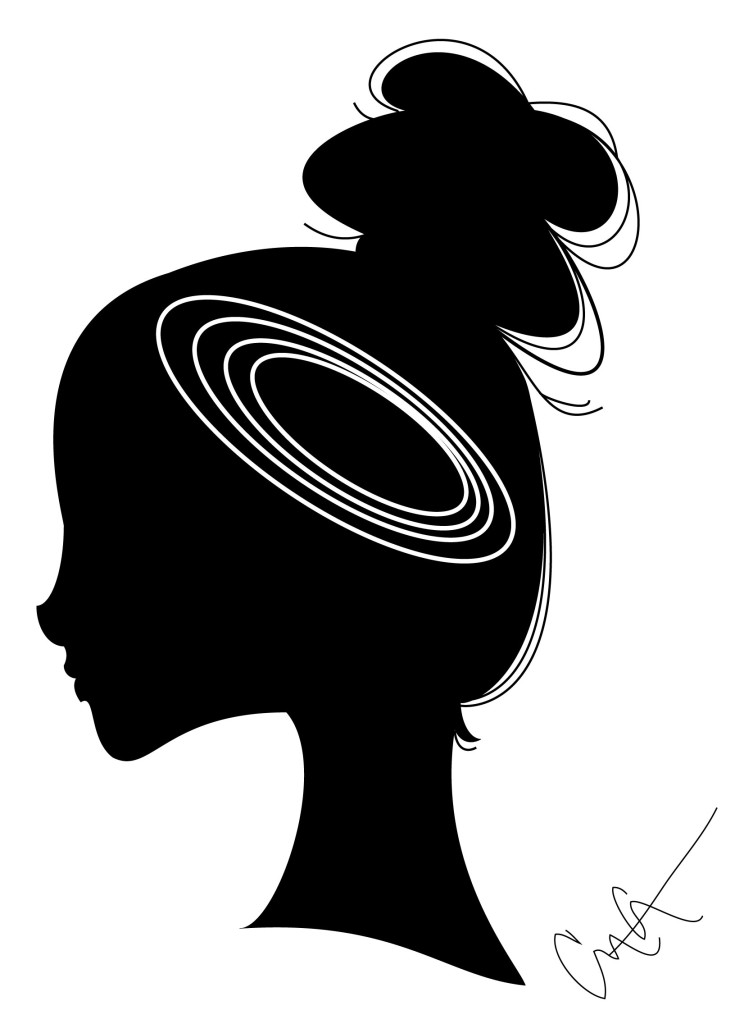
The first interval for a runner can sometimes feel like the worst. That’s where the nerves are, getting started.
Races are even crazier, poised at the line, in the seconds before the gun is about to CRACK you feel certain if they take any longer to fire it you’ll explode. Then, CRACK, and the whole world slips away.
“Back to those intervals…ya, suckers say the hardest is the first one…plowing through miler number three of five HAS to be more painful,” you think.
You then say, “Legs, don’t worry, this is the last interval we have to so…promise.” You say that after every one. Until you finish. Scr##w honesty.
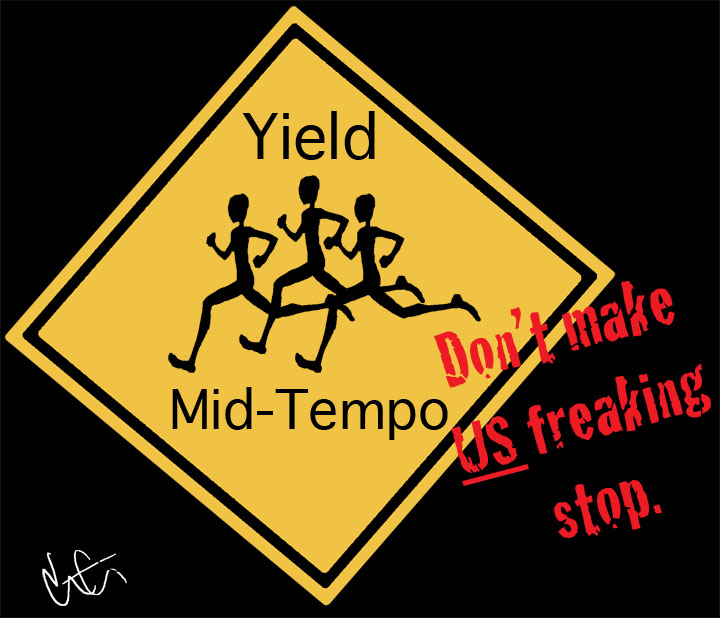
Funny how a running partner that you train with feels like a war partner. You come to know them so well, read their breathing and stride as well as your own. You become intrinsically linked in the shared quest for your best.
Easy days can feel like the epitome of hypocrisy sometimes.
Out of nowhere getting blessed with one of THOSE days is a special kind of euphoria a runner never forgets.
The good days, the slog runs, the meh ones, the mentally tough workouts you’re proud of, the long runs that you wish never end…all of it. It’s crazy stuff. But it’s runner crazy and we wouldn’t have it any other way.
1) Just before you start a race, what makes you feel confident on the line?
2) Best lie you’ve told yourself/legs to get through a workout?
3) One of THOSE days, how many do you think a runner gets?
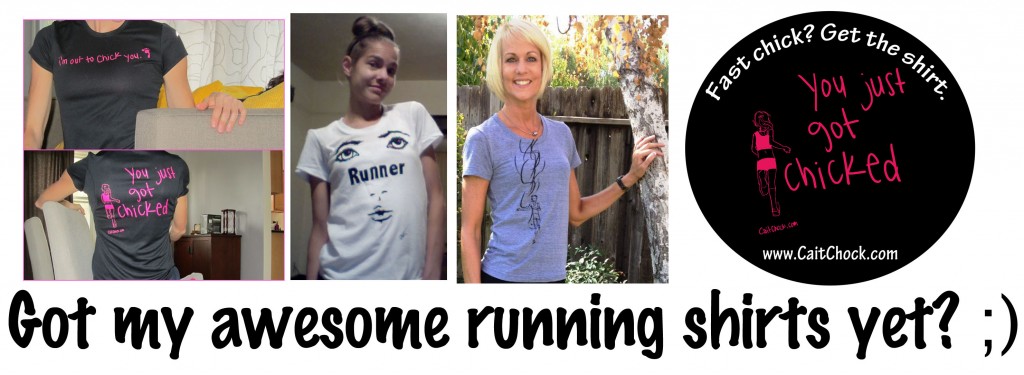
Blog: Sugar Frosted Goodness (Login to Add to MyJacketFlap)
JacketFlap tags: Add a tag
Blog: Ingrid's Notes (Login to Add to MyJacketFlap)
JacketFlap tags: Plot Definitions, Plot, Writing Craft, Add a tag
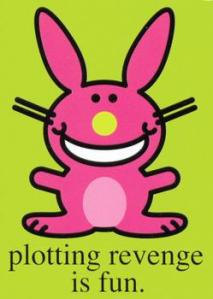 Awhile ago I did an 8-part series on Plot to help me understand the differences between the terms: plot, story, and structure. (I’ve since revised some of my thoughts from that series when I did my grad lecture on story structure. More on that coming soon). But what I seem to find interesting is that no one seems to be able to agree on what plot is.
Awhile ago I did an 8-part series on Plot to help me understand the differences between the terms: plot, story, and structure. (I’ve since revised some of my thoughts from that series when I did my grad lecture on story structure. More on that coming soon). But what I seem to find interesting is that no one seems to be able to agree on what plot is.
Sure, everyone sort of knows what plot is on a gut level, (and there’s plenty of overlap when writers discuss it), but there isn’t a concrete single definition. I think this is fascinating (and confusing), and oddly empowering. It means each of us gets to create our own personal definition of plot. We get to pick a definition that works for us!
I’ve begun to collect definitions of plot and I’ve shared my list below. Take a look through them and see if any resonate with you. Or maybe you’ll find you disagree with some (I sure do!). Perhaps some will confuse you, while others might help you consider plot in a whole new way! I’d love to know what you think.
As writers, we create our own philosophies about how we each define good writing and how the craft should be approached. Coming up with our own personal definition of plot is an interesting part of that journey. I’ve never found two writers who articulate it exactly the same way.
Here’s what some of my craft books, friends, and teachers have to say about plot:
“Plot is how the events in a story directly impact the main character.” - Martha Alderson
Story is: “The king died and then the queen died.” Plot is: “The king died and then the queen died of grief.” - E.M. Forster
“Story is what happens; plot is the structure of what happens.” - Cheryl Klein
“Plot is merely the mechanism by which your character is forced up against her deepest fears and desires.” - Margaret Bechard
“Plot is nothing more than the way you organize your story.” - Nancy Lamb
Plot is “merely one way of telling a story, by connecting the happenings tightly, usually through causal chains.” - Ursula Le Guin
“Story [is] what your novel is about. Plot [is] what happens within your story … Structure [is] how it’s organized.” - Sheryl Scarborough
“Plot is the arrangement of events that make up a story… Plot is the sequence of unfolding action. In examining plot we are concerned with causality, with how one action leads into or ties in with another.” – Chea Stephenson
“Plot is a system of actions.” – Susan Fletcher
Plot is “the under-the-surface weaving of various lines of action or sets of events so that the story builds steadily … It is a combination of what happens and how those events are revealed to the audience.” - John Truby
“Plot is not just what happens in a story. Rather, plot is a pattern of cause and effect or conflicts upsetting the equilibrium of a situation.” - Ron Layne and Rick Lewis
“Plots engage our capacity to understand motives and thus the logic of action.” - Roger Seamon
How do you define plot? I’d love to hear your personal definitions, thoughts, and ideas!
The above quotes come from the following sources: Alderson, Martha. The Plot Whisperer: Secrets of Story Structure Any Writer Can Master. Avon, MA: Adams Media, 2011. Print. Bechard, Margaret. Small Workshop Plot Handout. Vermont College of Fine Arts. 2012. Chea, Stephenson. “What’s the Difference Between Plot and Structure.” Associated Content. 16 Feb. 2010. Web. 7 May 2010. Forster, E.M. Aspects of the Novel. 1927. San Diego: Harcourt Brace Jovanovich, 1985. Print. Klein, Cheryl. “The Essentials of Plot.” CherylKlein.com. Web. Nov. 2012. Fletcher, Susan. Structure as Genesis. Faculty Lecture. Vermont College of Fine Arts. 2012. Lamb, Nancy. The Writer’s Guide to Crafting Stories for Children. Cincinnati, OH: Writer’s Digest Books, 2001. Print. Layne, Ron and Rick Lewis. “Plot, Theme, the Narrative Arc, and Narrative Patterns.” English and Humanities Department. Sandhill Community College. 11 Sept, 2009. Web. 7 May 2010. Le Guin, Ursula K. Steering the Craft: Exercises and Discussions on Story Writing for the Lone Navigator or the Mutinous Crew. Portland, OR: Eighth Mountain Press, 1998. Print. Scarborough, Sheryl. “Re: Laura’s (Way Late) Lecture Thread.” MFA Student Forum. Vermont College of Fine Arts. Web. Nov. 2012. Seamon, Roger. “The Price of Plot in Aristotle’s Poetics.” The Journal of Aesthetics and Art Criticism, 64:2, Spring 2006. Ebsco Host. Web. 10 May 2011. Truby, John. The Anatomy of Story: 22 Steps to Becoming a Master Storyteller. 2007. New York: Faber and Faber, 2008. Print.
Blog: Ingrid's Notes (Login to Add to MyJacketFlap)
JacketFlap tags: Add a tag
 Awhile ago I did an 8-part series on Plot to help me understand the differences between the terms: plot, story, and structure. (I’ve since revised some of my thoughts from that series when I did my grad lecture on story structure. More on that coming soon). But what I seem to find interesting is that no one seems to be able to agree on what plot is.
Awhile ago I did an 8-part series on Plot to help me understand the differences between the terms: plot, story, and structure. (I’ve since revised some of my thoughts from that series when I did my grad lecture on story structure. More on that coming soon). But what I seem to find interesting is that no one seems to be able to agree on what plot is.
Sure, everyone sort of knows what plot is on a gut level, (and there’s plenty of overlap when writers discuss it), but there isn’t a concrete single definition. I think this is fascinating (and confusing), and oddly empowering. It means each of us gets to create our own personal definition of plot. We get to pick a definition that works for us!
I’ve begun to collect definitions of plot and I’ve shared my list below. Take a look through them and see if any resonate with you. Or maybe you’ll find you disagree with some (I sure do!). Perhaps some will confuse you, while others might help you consider plot in a whole new way! I’d love to know what you think.
As writers, we create our own philosophies about how we each define good writing and how the craft should be approached. Coming up with our own personal definition of plot is an interesting part of that journey. I’ve never found two writers who articulate it exactly the same way.
Here’s what some of my craft books, friends, and teachers have to say about plot:
“Plot is how the events in a story directly impact the main character.” - Martha Alderson
Story is: “The king died and then the queen died.” Plot is: “The king died and then the queen died of grief.” - E.M. Forster
“Story is what happens; plot is the structure of what happens.” - Cheryl Klein
“Plot is merely the mechanism by which your character is forced up against her deepest fears and desires.” - Margaret Bechard
“Plot is nothing more than the way you organize your story.” - Nancy Lamb
Plot is “merely one way of telling a story, by connecting the happenings tightly, usually through causal chains.” - Ursula Le Guin
“Story [is] what your novel is about. Plot [is] what happens within your story … Structure [is] how it’s organized.” - Sheryl Scarborough
“Plot is the arrangement of events that make up a story… Plot is the sequence of unfolding action. In examining plot we are concerned with causality, with how one action leads into or ties in with another.” – Chea Stephenson
“Plot is a system of actions.” – Susan Fletcher
Plot is “the under-the-surface weaving of various lines of action or sets of events so that the story builds steadily … It is a combination of what happens and how those events are revealed to the audience.” - John Truby
“Plot is not just what happens in a story. Rather, plot is a pattern of cause and effect or conflicts upsetting the equilibrium of a situation.” - Ron Layne and Rick Lewis
“Plots engage our capacity to understand motives and thus the logic of action.” - Roger Seamon
How do you define plot? I’d love to hear your personal definitions, thoughts, and ideas!
The above quotes come from the following sources: Alderson, Martha. The Plot Whisperer: Secrets of Story Structure Any Writer Can Master. Avon, MA: Adams Media, 2011. Print. Bechard, Margaret. Small Workshop Plot Handout. Vermont College of Fine Arts. 2012. Chea, Stephenson. “What’s the Difference Between Plot and Structure.” Associated Content. 16 Feb. 2010. Web. 7 May 2010. Forster, E.M. Aspects of the Novel. 1927. San Diego: Harcourt Brace Jovanovich, 1985. Print. Klein, Cheryl. “The Essentials of Plot.” CherylKlein.com. Web. Nov. 2012. Fletcher, Susan. Structure as Genesis. Faculty Lecture. Vermont College of Fine Arts. 2012. Lamb, Nancy. The Writer’s Guide to Crafting Stories for Children. Cincinnati, OH: Writer’s Digest Books, 2001. Print. Layne, Ron and Rick Lewis. “Plot, Theme, the Narrative Arc, and Narrative Patterns.” English and Humanities Department. Sandhill Community College. 11 Sept, 2009. Web. 7 May 2010. Le Guin, Ursula K. Steering the Craft: Exercises and Discussions on Story Writing for the Lone Navigator or the Mutinous Crew. Portland, OR: Eighth Mountain Press, 1998. Print. Scarborough, Sheryl. “Re: Laura’s (Way Late) Lecture Thread.” MFA Student Forum. Vermont College of Fine Arts. Web. Nov. 2012. Seamon, Roger. “The Price of Plot in Aristotle’s Poetics.” The Journal of Aesthetics and Art Criticism, 64:2, Spring 2006. Ebsco Host. Web. 10 May 2011. Truby, John. The Anatomy of Story: 22 Steps to Becoming a Master Storyteller. 2007. New York: Faber and Faber, 2008. Print.
Blog: Angela N. Dominguez (Login to Add to MyJacketFlap)
JacketFlap tags: Add a tag
Here are some of my left over drawings from ILL 699 Character Design for Children's Book Class (and scary slasher one from Eli Harris' Clothed Figure Class). They are all about 10 minute poses.
I loved teaching the course, and can't wait till the next term. I'll post up some of the best work from the students on the AAU Children's Book blog soon.
Blog: Silver Apples of the Moon (Login to Add to MyJacketFlap)
JacketFlap tags: Add a tag
Blog: Dueling Banjo Pigs (Login to Add to MyJacketFlap)
JacketFlap tags: Add a tag

Muhlenberg County High School Visual Arts
Blog: Dueling Banjo Pigs (Login to Add to MyJacketFlap)
JacketFlap tags: Add a tag

Muhlenberg County High School Visual Arts
Blog: Dueling Banjo Pigs (Login to Add to MyJacketFlap)
JacketFlap tags: Add a tag

Muhlenberg County High School Visual Arts
Blog: Dueling Banjo Pigs (Login to Add to MyJacketFlap)
JacketFlap tags: Add a tag

Muhlenberg County High School Visual Arts
Blog: Dueling Banjo Pigs (Login to Add to MyJacketFlap)
JacketFlap tags: Add a tag

Muhlenberg County High School Visual Arts
Blog: Dueling Banjo Pigs (Login to Add to MyJacketFlap)
JacketFlap tags: Add a tag
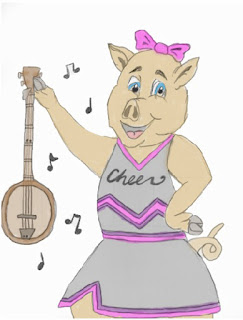
Muhlenberg County High School Visual Arts
Blog: Dueling Banjo Pigs (Login to Add to MyJacketFlap)
JacketFlap tags: Add a tag
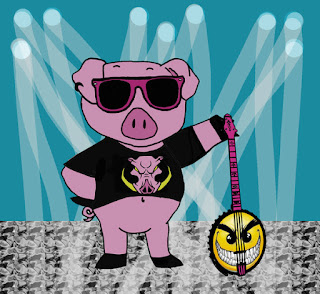
Muhlenberg County High School Visual Arts
Blog: Dueling Banjo Pigs (Login to Add to MyJacketFlap)
JacketFlap tags: Add a tag

Muhlenberg County High School Visual Arts
Blog: Dueling Banjo Pigs (Login to Add to MyJacketFlap)
JacketFlap tags: Add a tag

Muhlenberg County High School Visual Arts
View Next 25 Posts
















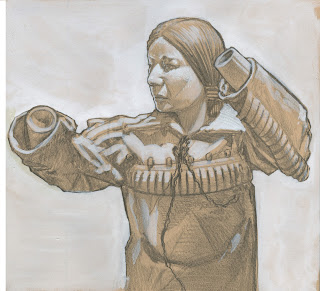











She's such a cutie. I particularly like the movement in the hair and the fin.
Lots of movement in this piece... she look light and floaty
She's so cute!! Love your work!
Great character and lovely movement with her gesture and tail!
very nice! *_*
Beautifully drawn!